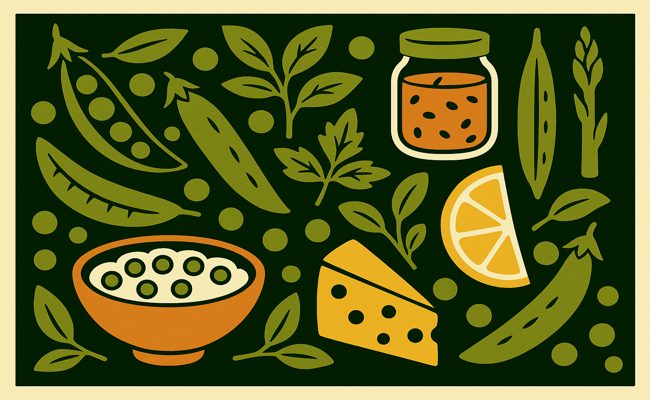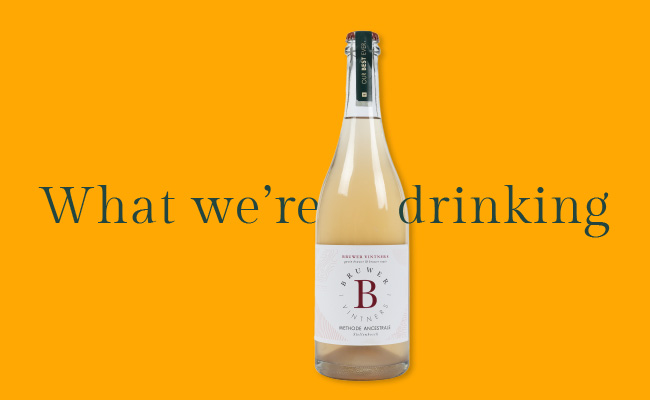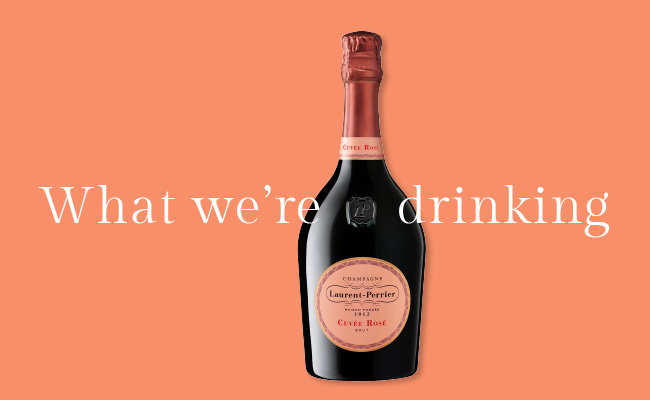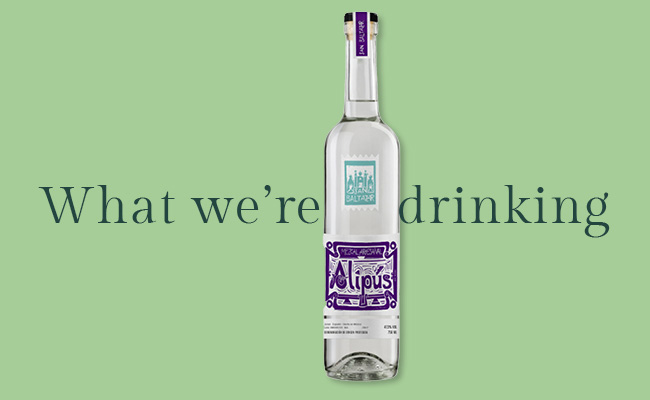We always remember our “firsts”: first pair of skates; first time we drove our grandfather’s tractor; that first kiss. And then there was the first time our uncle quietly slipped us a gin and tonic and the word “fratricide” came into our vocabulary when we told our father why we “couldn’t feel our face anymore”.
The loveliest thing by far about seasonal eating is not its low-carbon-footprint-virtue-signalling value, but that every year we can celebrate anew the firsts of that season.
Now that spring is sprung and the grass is riz, we are delighting in asparagus, artichokes, fava beans, strawberries and this month’s key ingredient, the humble pea.
Some of us are downright giddy about said pea: last night one of our local restaurants, showcasing its garden, served us an amuse bouche featuring a chic, single raw pod with precisely seven perfect green spheres nestled inside. (They paired remarkably well with the Strandveld Adamastor, bringing the semillon to the fore.)
Peas and “petit pois”, the smallest and sweetest French peas, are best fresh, but remarkably fine even after freezing. They always lurk in my freezer to toss in a soup, stew or curry, and to haul out for a sprained ankle or tender morning-after head.
Peas were one of humanity’s first cultivated foods and “all the rage” in 1696 France, according to King Louis XIV’s secret second wife, Madame de Maintenon. And in the 19th century, a Czech monk discovered the rules of heredity while growing pea plants. The work of Gregor Mendel, now referred to as the father of genetics, went virtually unnoticed during his lifetime; however, in the early 20th century biologists realised that his “heritable factors” like height, flower and seed colours and seed shapes were carried on chromosomes.
Peas play well with friends. From anise (usually in the form of tarragon or fennel – try pea fritters with a tarragon crème fraîche for dipping); to mashed potatoes filling samosas; to their spring neighbours in the garden (they tumble around in salads or creamy pasta dishes with asparagus and artichokes like ungovernable children in a ball pit).
A simple and delicious blast of pea and cheese umami is risi e bisi. It’s a Venetian dish made traditionally for the Doge on St Marks Day, and Marcella Hazan bids us to think of it not as a risotto, but a very thick soup. The purists among us will use the pea pods to make a stock, but for 200g of short-grained arborio or carnaroli rice and 1kg of peas, she has us melt 50g of butter to soften half a chopped onion. Toss in the peas and some salt and gently cook for a couple of minutes. Add 700g of (any) stock and boil gently for about 10 minutes. To this put the rice and another 300g stock into the pot and simmer 15 minutes until the rice is al dente. Stir in heaps of the most expensive Parmigiano Reggiano you can afford (about 50g) and any salt you think it needs. Top with a little chopped parsley if you want to amp up the greenery. Eat with a “spork”.
Mushy peas: a culinary crime scene
Mint and peas form a clique of two. I once read a description of their friendship as “summer in England”, where mint is the sunshine overshadowed by damp, gloomy, overcast peas. I think that is unfair, however, and prefer to personify the two as an earnest earthmother in a fit of bravery choosing a sparkly wrap for the party.
A quintessential English cook, Nigel Slater, cooks peas gently in some olive oil, a splash of water and salt for about 10 minutes. As he serves them, he adds a couple of sprigs of chopped mint, some lemon juice and black pepper. Not at all gloomy.
But while we are speaking of England, we must digress for a moment to where I know your mind went when you initially saw the word pea: that culinary crime scene onomatopoeically called mushy peas by all British school children and the grown people they become. These are made with a varietal of field pea known as the marrowfat pea. (I mean, yuck.) Further: “Pease porridge hot, pease porridge cold, pease porridge in the pot nine days old.” Who would eat anything out of a pot that is nine days old?! There is one use, however, for that pea I applaud: the stylish and addictive Japanese wasabi pea. Never were two countries better defined than by what they do with this pea.
Permit me another digression I’m sure you will find useful at the next pub quiz: the world record for eating peas is held by Janet Harris of Sussex who, in 1984, ate 7,175 peas one by one in 60 minutes. Using chopsticks.
Turning to the Swedes for some unexpected dried pea-and-pork lore, Thursday’s meal, dating back to the Middle Ages and served before Friday’s Catholic fast, uses a yellow split pea for soup with smoked ham or bacon. It is still served in canteens and prisons and schools (same thing, I know) and probably the king’s grand dining room. Called ärtsoppe, it is followed by pancakes with soured cream and lingonberry jam. I’m there for the pancakes.
Yellow split peas are also served as meze in Greece. Confusingly known as Santorini fava (using no fava beans whatsoever), it is a spread made with browned onions and peas simmered until very soft, blitzed and served with either caramelised or raw finely chopped red onions and capers atop.
Back to fresh peas: the cooks of India give us keema curry of lamb mince and peas, matar paneer, and tomato-based aloo matar, a potato and pea curry. They are the world’s largest consumers of peas, eating some 24 metric tons a year.
Whenever I have leftover rice, I haul out my wok for egg fried rice. Fry a small onion or spring onions in a tablespoon or so of oil (you can add some ginger and garlic, too). Add a few handfuls of cold cooked rice and toss around with some peas. Add two beaten eggs, a splash of soy sauce and let the eggs set a bit, turning and, if you like, stir in a hint of sesame oil as you serve. The wok is essential. It imparts a special aromatic, charred flavour known as “wok breath” or “wok hei”.
What about my dessert, you cry? Yes, we can, to paraphrase Barack Obama. Acclaimed Paris chef Guy Martin serves pea ice cream in crisp little cones. But peas out, people (sorry). If that is a step too far, you can dollop it on a cold summer soup like vichyssoise or cucumber and dill.
Sign up to Currency’s weekly newsletters to receive your own bulletin of weekday news and weekend treats. Register here.













